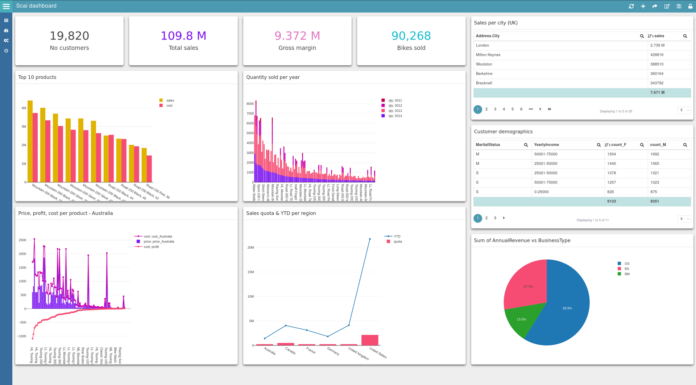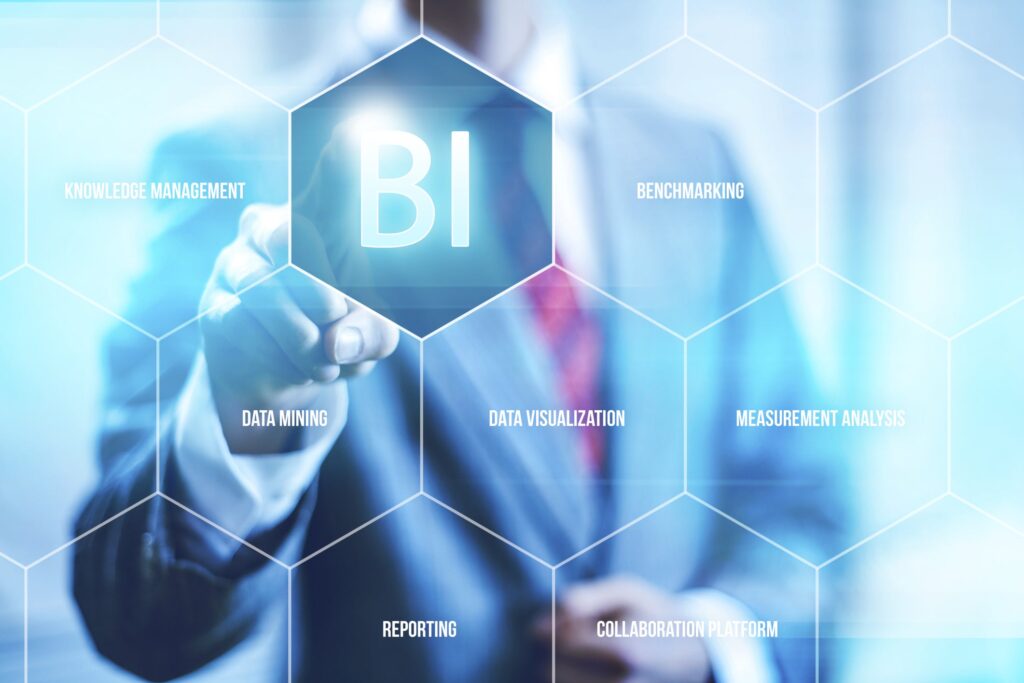
Business intelligence dashboards aggregate and display data in a visualized overview to help businesses analyze performance. This enables users to easily see trends and correlations, which can improve business success.
It is important to choose the right visualizations for your BI dashboard. Visualizations should enhance understanding of the data, not clutter it.
Data analytics & business dashboards
A business intelligence dashboard is a data visualization tool that helps users analyze, share and act on information. They can also help businesses understand how to use data to make more informed business decisions.
They connect and extract information from a range of data sources, services and APIs in a single view, through visuals such as charts, figures and graphs. This gives them the ability to track a variety of key performance indicators (KPIs) and metrics that transform raw data into useful business insights, helping executives, managers and average users gain valuable insight into their businesses’ progress.

The right dashboard can help you save time, increase efficiency and boost profits. Our dynamic customer service dashboard is one example, enabling everyone from support agents and team leaders to senior managers and VPs to see the data they need in order to provide a seamless, seamless experience for customers.
Modern analytics dashboards can help you monitor omnichannel KPIs that are most important to your business. These include customer engagement, which involves measuring website traffic; social media likes and shares; email opens, and more.
Traditionally, some companies used spreadsheets to create dashboards; however, this is labor-intensive and inflexible. This approach also requires importing data from business applications to the spreadsheet, which is not a real-time process.
Business intelligence & interactive reporting development services
Business intelligence dashboards provide information about key performance indicators and other data points for an organization, department, team or process. They are an integral part of most BI software platforms and are widely used to deliver analytics information to business executives and workers.
Generally speaking, a business intelligence dashboard combines a number of data visualizations to offer users a comprehensive view of important KPIs and trends for operational decision-making and long-term planning. These are more interactive than static reports, and they can be developed by business analysts or other users of self-service BI technologies.

These business intelligence dashboards can be of any type, depending on your business needs. The most common types include operational, analytical and long-term strategic dashboards.
Operational dashboards are typically handled by junior management levels, which use them to monitor shorter-term processes. These dashboards are based on real-time data and allow operational managers to visually highlight problems that need to be fixed.
Analytical dashboards are more advanced and can be accessed by all levels of management. They are more pixel-perfect than reporting tools and contain enormous volumes of data that analysts have produced.
BI dashboards should be designed to communicate quickly, clearly and factually to their audience. They should not clutter the screen with a lot of data, as this can confuse and overwhelm the audience. Instead, they should be designed to show the story of your company and use the right metrics visuals for that. To get the tailored ones for your order apply to https://cobit-solutions.com/en/ .
Save time & increase control

Business dashboards improve your company’s efficiency by serving up relevant real-time insights that allow you to make accurate, data-driven decisions. They also help increase accountability by surfacing trends and issues that might otherwise be hidden.
The best BI dashboards are easy to use, making it possible to get important information in a clear and logical way. This means that each decision maker can grasp the data and identify areas of weakness.
Iterate and improve: If you’re building a new dashboard, it is critical to take the time to make sure that your visualizations convey the message you want them to. It’s also a good idea to ask for feedback from key stakeholders in your core audience.
Freedom & Flexibility: Many BI platforms now offer cloud-based infrastructure that can be accessed online, allowing you to access your business intelligence anytime, anywhere. This is an invaluable feature for users, who can analyze business information from a desktop or laptop, mobile device, or any other device that supports a web browser.
Business dashboards can be designed using a variety of visualization types, from simple line and bar charts to more complex graphs like scatterplots and heat maps. Depending on your needs, you can even connect your dashboards to different data sources and consolidate them into a single visualization to create a holistic picture of performance.







